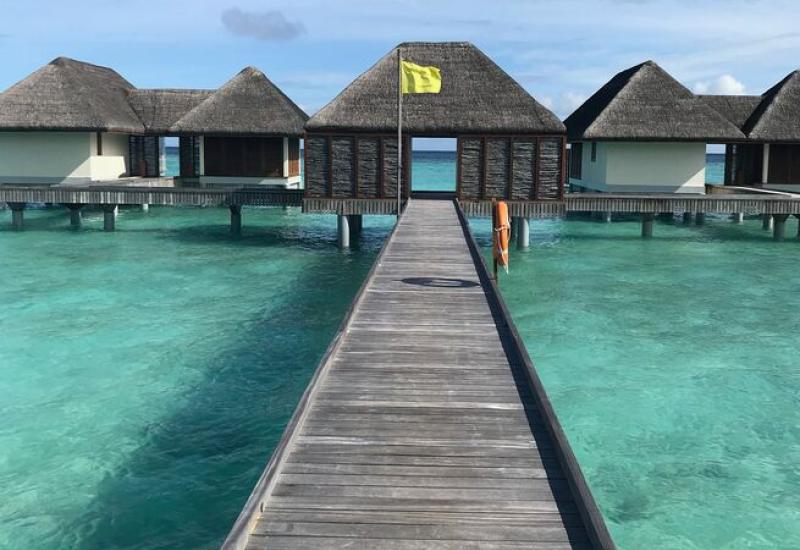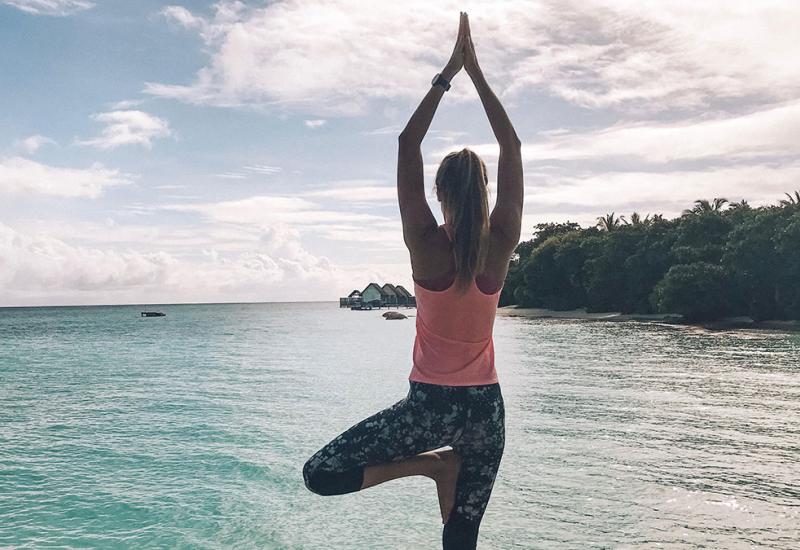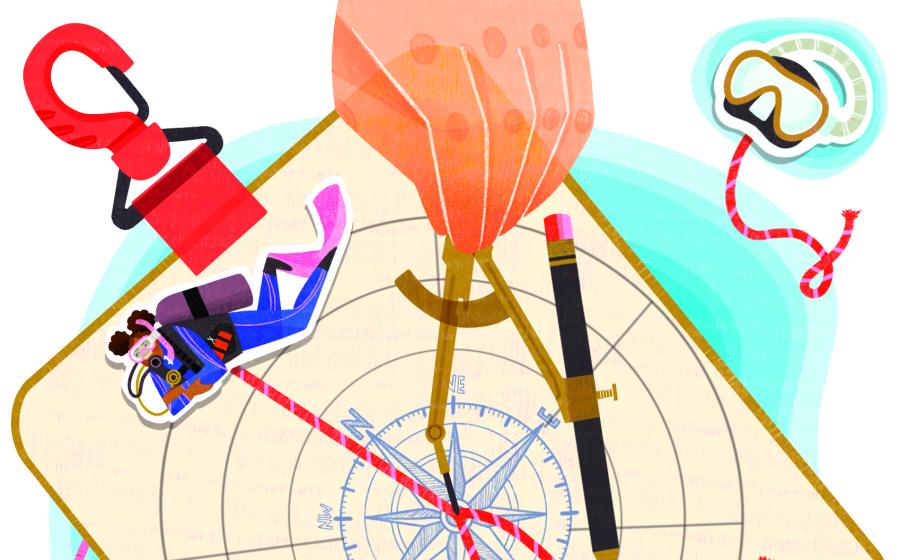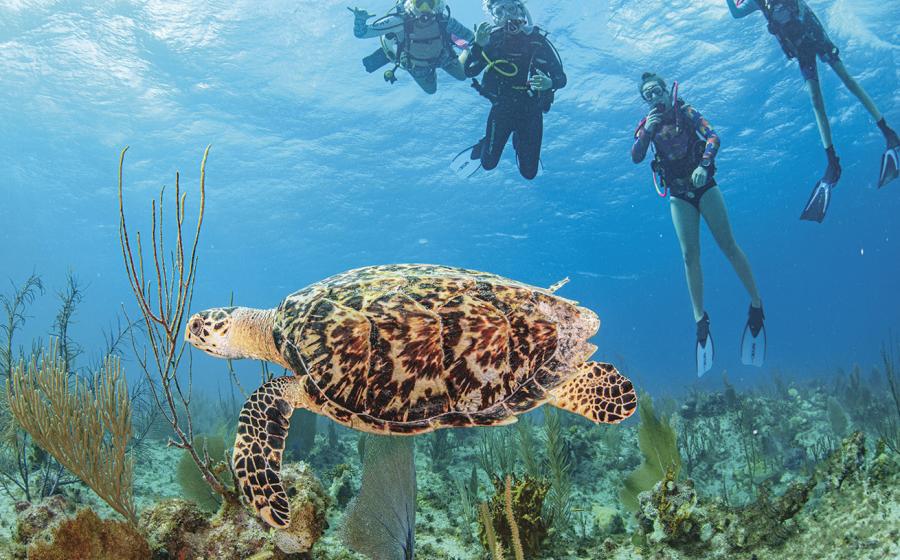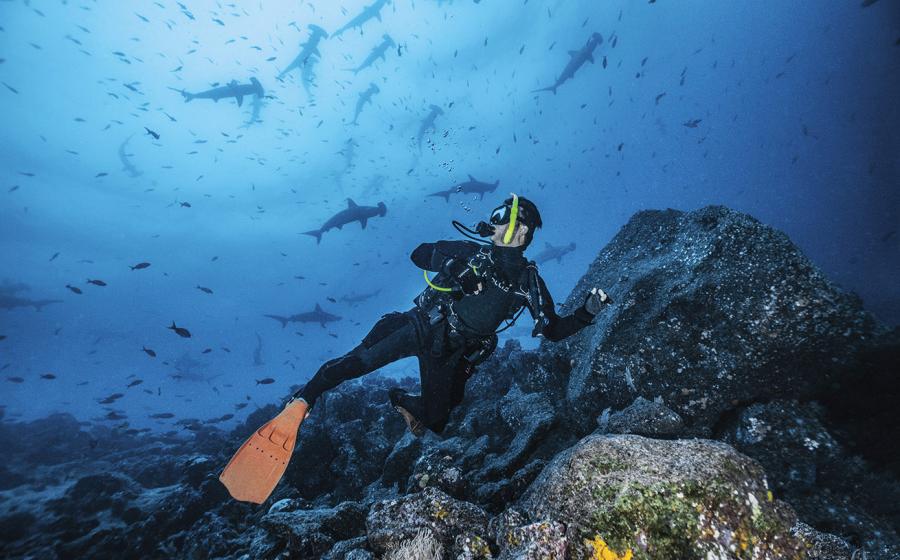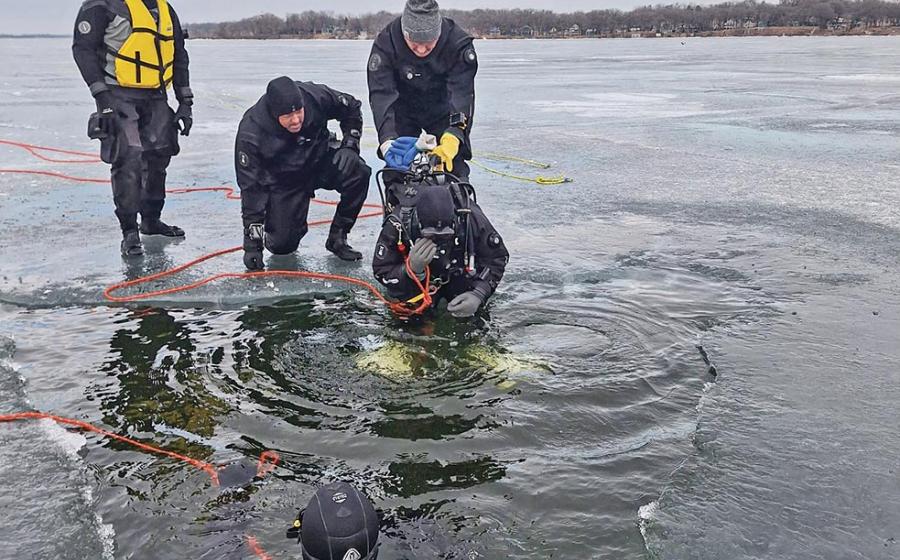World's Best Dives: 10 Land and Sea Safaris for Scuba Divers

Phillip CollaIn other parts of the world, hammerheads are elusive, but in the Galapagos Islands, they often come within touching distance of divers.

Paul SoudersDive Hornby Island in Vancouver for year-round sea lion encounters.

Blickwinkel/AlamyLoveable land animals like kangaroos complement the big animals found underwater in some of our favorite dive destinations.

Michael S. NolanIn Antarctica, watch leopard seals slip, waddle and slide on the icebergs, finding grace only in the water.

David FleethamAt Manta Sandy in Indonesia, divers kneel in sand and watch as a manta show commences overhead.

Dennis DonohueAfter shark diving on South Africa's east coast, why not bike your way through lion, hippo and elephant territory?

Joane Weston/ AlamyIn Belize, howler monkey habitat is on the mend; the booming growls of the tree sprites are proof indeed of forest regeneration.
1. Australia: Minke whales and kangaroos
Turns out the spotter planes were never necessary. When Mike Ball Dive Expeditions’ MV Spoilsport first began cruising Australia’s Great Barrier Reef in search of dwarf minke whales 19 years ago, the staff assumed they’d need help. Instead, the whale slowly edged in, targeting the boat like a bullseye. “They are as interested in us as we are in them,” says proprietor Mike Ball of these 26-foot whales. The sighting season is June and July; whales typically approach the boat in pairs or threesomes, typically staying 90 minutes. Trips span three, four or seven nights, all returning to Cairns; from this port town, it’s an eight-hour drive to the Cape Hillsborough National Park where visitors can interact with kangaroos on the massive, packed-sand beach with green hills as a backdrop. Less scenic but also less of a drive — 22 minutes north of Cairns — Kewarra Beach certainly has its share of ’roos. As is true for most of rural Queensland, you don’t need a guide, binoculars or much of anything to spot these charismatic jumpers.
2. Galapagos: hammerheads and blue-footed boobies
Elsewhere in the world, hammerheads are so elusive, it doesn’t matter how you respond — you’ll soon see nothing but tail. In the Galapagos Islands, there’s protocol. Wayne Hasson, president of Aggressor fleet, explains that divers are briefed to nestle motionless behind rock outcroppings, protected from current. “The hammerheads come within touching distance,” he says, not that he’s advocating contact. The remote islands of Wolf and Darwin see schools in the hundreds. Out there, silky and Galapagos sharks, averaging 12 to 15 feet, approach divers. “They’re not afraid at all, and that can be spooky to new divers.” Whale sharks are also regularly seen. “I’ve been in the middle of five,” Hasson says, “wondering how to fit more than two in the camera frame.” During the Thursday-to-Thursday trips, off-gassing time is spent in dinghies, motoring between the rocky coastline where blue-footed boobies, penguins, marine iguanas and Galapagos sea lions nest. The land animals, who are unafraid of humans, don’t mind how you behave either, making nabbing a close-up rather cinchy.
3. Belize: whale sharks and howler monkeys
It’s a trick — but a harmless one. At Gladden Spit, 22 miles off the coast of Placencia, Belize, divers circle up and release bubble streams from regulators. The free-flows simulate cubera snapper spawn, luring in whale sharks for a closer view. The season for the sharks extends March through June, but year-round in the country’s interior, hikes through the jungle give glimpses of exotic fauna such as howler monkeys, keel-billed toucans and tapirs — a pig-like forager with a snout like an anteater. Hurricanes Stan and Wilma in 2005 knocked free much of the canopy that gave habitat to the monkeys, but it’s on the mend. Stay the night at Ian Anderson’s Caves Branch Jungle Lodge and you’ll hear booming growls belonging to the tree sprites — proof indeed of forest regeneration.
4. Indonesia: manta rays and Komodo dragons
The instructors call it the manta cinema. MV Arenui, an Indonesia-based live-aboard, regularly visits Manta Sandy, a site where divers kneel on white sand and watch overhead as a manta show commences. “So many different behaviors can be observed at Manta Sandy: cleaning, feeding, jumping clear out of the water and sometimes manta trains where a large female leads males on a wild chase, swooping and plunging over the diver’s heads,” says Debbie Arriaga, the ship’s cruise director. She also points out that Raja Ampat is unique in that it’s a place to encounter both reef and giant mantas; the latter are often seen passing a pinnacle at the site Blue Magic. On day seven of the Bali-to-Labuanajo itinerary, guests disembark on Loh Liang or Loh Buaya, aka Komodo or Rinca Island — both are home to komodo dragons, the largest lizard, spanning up to 10 feet. The dragon possesses little of the grace than mantas do, but its lumbering swagger holds its own appeal — in a Soprano mob boss sort of way.
5. South Africa: great whites and lions
It’s chaos at its purest and most beautiful. Every May through July, millions of sardines writhe a course along South Africa’s east coast. This sardine-nado is a moving buffet where great white, hammerhead, bull and copper sharks, and bottlenose dolphins cut the line, gulping as much as their entry ticket allows. Further east on the Mozambique border is Kruger National Park; if you’re ballsy enough to go nose to nose with so many sharks, why not continue to chase adrenalin. At Olifants Rest Camp, trade four for two wheels, mountain biking your way through hippo, elephant and lion territory.
6. Vancouver: sea lions, orcas and bears
Dive Hornby Island in February and you might believe you’re incredibly lucky. Michelle Blais, manager of Rowands Reef dive shop in Vancouver, five hours’ south by car, says that sea lions are common year-round, but the second month makes orca and humpback sightings likely. On several occasions, she hasn’t even made it to the day’s dive site before flapping tails break the surface. “We’ve seen a family of orcas fishing for herring; that was rare — even the boat captain was surprised,” she says. Blais adds that February is the ideal time to explore Hornby’s waters; it’s neither sea lion mating nor migration season, freeing the juvenile males to be at their most playful. To meet the big attractions on land, namely the black bears, a summer visit is preferable.
7. Antarctica: leopard seals and Gentoo penguins
Icebergs seemed designed for comedy. Watch any animal, be it Gentoo penguin or leopard seal, navigate above the water: they slip, waddle and slide. Only in the water do they find grace again. The MV Polar Pioneer targets the rookeries and pods of the Antarctic Peninsula, with two dives a day. In between, Zodiacs ferry between the ice patches for more encounters. Although mid-dive sightings are possible, it’s during these mini excursions that seeing a humpback, orca or minke whale is much more likely.
8. Kona: Mantas and birds
The sighting rate at Kona’s famous manta site, Garden Eel Cove, is 85 percent. Typically, about five to 10 take advantage of the light show attracting plankton by the clouds. Last summer, 42 mantas appeared on one dip, setting a new all-time high. These are the reasons Hawaii’s Big Island remains a top pick for those seeking encounters. Stay a while, says Keller Laros, instructor for Jack’s Diving Locker, and you learn to identify them individually; right now, about 200 are named, recognizable thanks to spots and other markings. “Everyone knows Lefty,” he says of the easiest to ID — her left fin curves up toward her face. The others take more time to get to know, but it’s a rewarding pastime. It’s the same sort of buzz one gets from treading rainforest or ranch, binoculars at the ready. Hawaii’s birds are stunning in color and song. Getting to know them by their red masks and neon yellow chests is much like the manta dive. First, the instructor points out who you’ve just met; after, it’s altogether more pleasing when you make a positive identification on your own.
9. Florida: Manatees and gators
The coldest days of January and February see the most manatees huddled together at sites such as Three Sisters Springs on Crystal River just outside the city of Tampa. There’s no diving — only snorkeling — with these potato-shaped sweethearts, but the encounters last as long as your tolerance to cold does. Go early in the morning for the biggest numbers. These big softies crave human interaction, and like a beloved dog, roll over for a belly scratch. Whereas manatees approach people, alligators, especially young ones, do the opposite. Head 90 minutes south to canoe or kayak the Hillsborough River in Thonotosassa. Even on a cold day in January, these prehistoric-looking beasts, just like the manatees, can’t help but seek heat; in their case, it means sunning on a wide log.
10. Costa Rica: Giant oceanic mantas and leatherback turtles
It’s perhaps the most stirring encounter one can have on a beach. Witness a 2,000-pound leatherback turtle fin its way up past the waterline, scoop loose a nest from the sand and deposit hundreds of rubbery eggs — and just try not to tear up. These massive species breed on both coasts of Costa Rica; on the northern Pacific side, Las Baulas National Park in the province of Guanacaste is a sure bet October to May to see the laying process. This coast is also where divers can log time with manta rays: Octotal Beach Resort and Hotel targets the Bat Islands to see the biggest manta species, the giant Pacific. Spot one, and with it, hundreds of smaller devil rays. Whether it’s the beauty of their grace or the presence of so many, it’s another encounter when you may find yourself choking back emotion. Don’t worry — there’s nothing weak about being swept up by one of nature’s most amazing displays.
Planning your next big dive adventure? Check out the Travel section of our web site!


